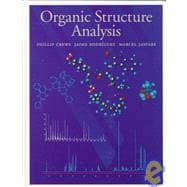Organic Structure Analysis

Organic Structure Analysis
- ISBN 13:
9780195101027
- ISBN 10:
0195101022
- Format: Hardcover
- Copyright: 06/25/1998
- Publisher: Oxford University Press
- Newer Edition
Rent
Sorry, this item is currently unavailable.



